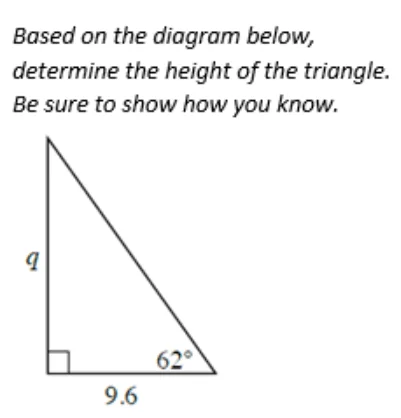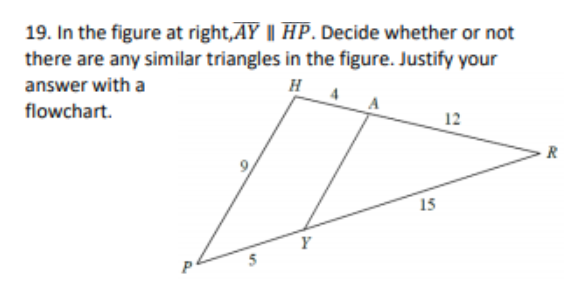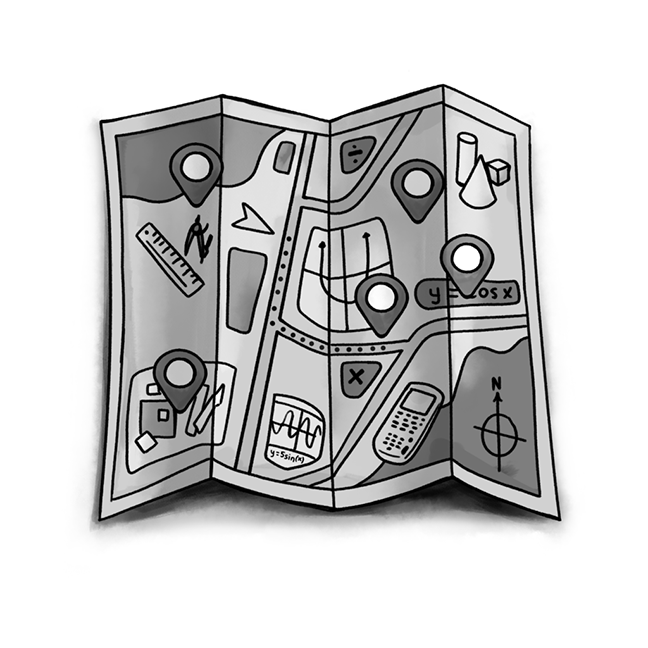Brian Ryczkowski, Green Bay, WI, bryczkowski@ashwaubenonk12.org
This is harder than I thought it would be. I feel very fortunate to have a job right now. I miss asking students, “Who do you guys play tonight?” and “How did you get that answer?” I know Rebecca Barrett-Fox told us to Please do a bad job of teaching your courses online, but I thought I would be good at it. Remote learning has taken the relationships out of teaching, which is why many of us got into education.
I have tried a variety of things while remote learning from Titletown (Green Bay, Wisconsin), none of which I have hung my hat on like when I was in the classroom. I read Using CPM With Remote Learning (PDF) and bounced ideas off of colleagues at Ashwaubenon High School. This is what I have tried.
We were sent home with three weeks left of Term 3, one of which was spring break. With most of the term completed, we decided to work on reviewing and enriching concepts we were hoping students to have mastery of. During these two weeks, we used CPM’s Checkpoint Materials and other resources to see how well students knew the concepts we have covered thus far.
We created custom Desmos activities for students to submit their answers. It was a way to see what students had as solutions, to see if there were any trends, and to identify which kids needed help. An example is below. We checked to see if students could determine which trig ratio to use and if they could set up the correct ratio.

Using Desmos, students can submit their answers to each question. We did not type in all of the questions, copy and paste the problem, or upload the images. The students only saw the problem number, and we simply asked the students to tell us what their solution was. Desmos has the ability to compile student solutions side-by-side for easy comparison. Here’s what it looked like for teachers. Now that we were able to determine which students got the answer wrong, we could send them individual messages through Desmos, email, or Remind (a communication platform used by teachers to communicate with students). Students could share with us which tool they used or take a picture and send it to us. We also made screencasts of the problems from the day’s assignment, with feedback for the class as a whole. These were then uploaded to Google Classroom. At the end of the week, students took a picture of the whole assignment and uploaded it to Google Classroom. We could then see all the work the student did and provide additional feedback.
Desmos has the ability to allow students to upload pictures. For example, you can ask students to use a flowchart to show two triangles are simila

In Desmos, ask the students to upload a picture by creating a slide to upload an image. See what it looks like when the students get to that question. When students upload their flowchart, you can see them on the teacher dashboard, but it looks even better when you click on a specific student’s response.
As we transitioned to Term 4, we moved forward with new learning. Without the ability for students to be in teams and with students working at different times of the day (which is not always the same hours as the teachers are working), we thought that we could be their teammate, sort of. For example, we decided on a few core problems we thought went together and listed those in a document for students. As a way to simulate the classroom, we recorded ourselves reading the problem, asking students to pause the video at certain points to provide them an opportunity to Think-Ink their thoughts, and then we followed that with our own thinking. Afterward, students have Review & Preview problems to complete. Then, they take a picture of the lesson work and homework and upload that to Google Classroom.
It takes more time to provide feedback to students online than it does in person but I feel I have provided opportunities for growth. If you have any questions about anything I have tried, or can provide me with any suggestions, let me know.
